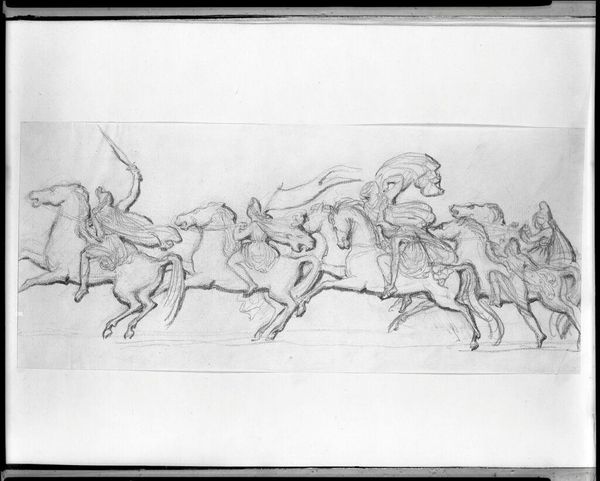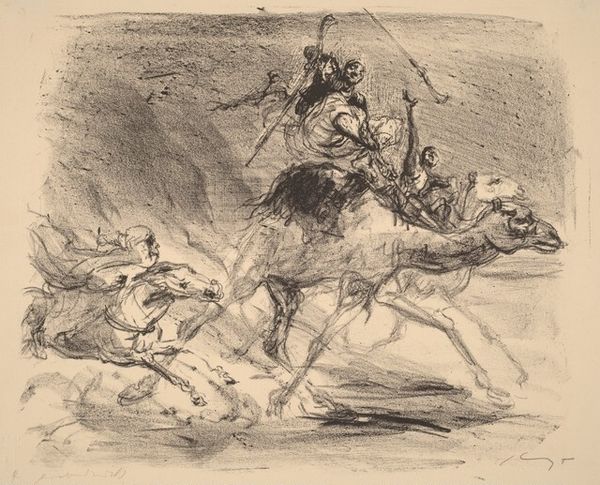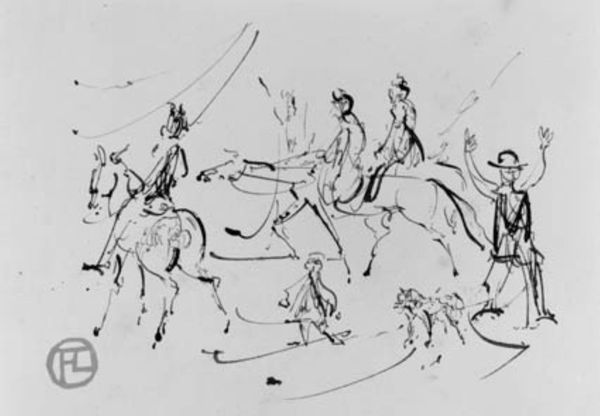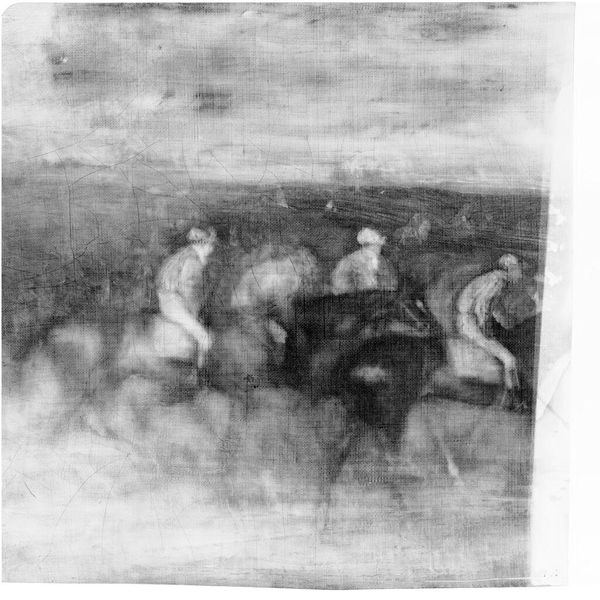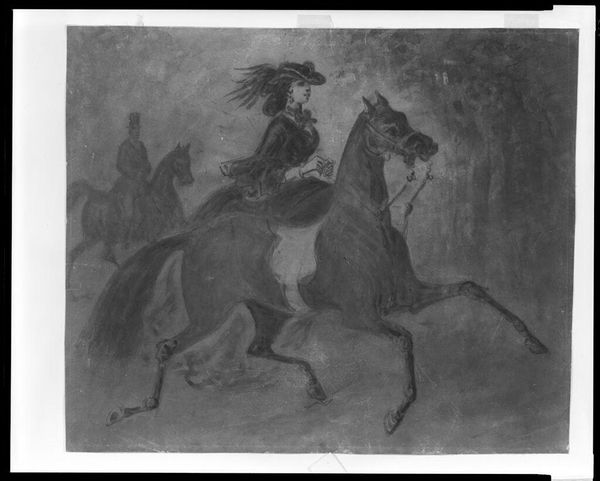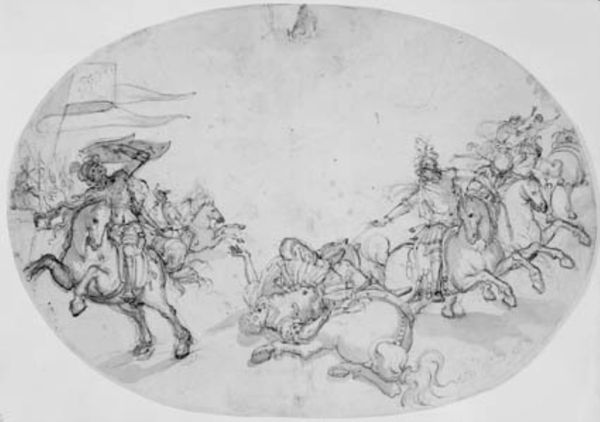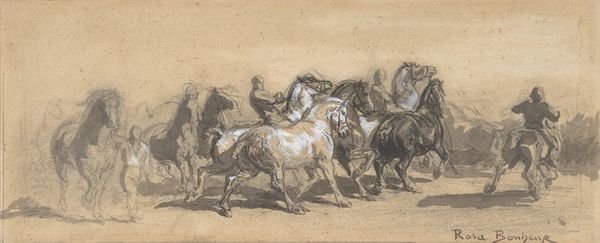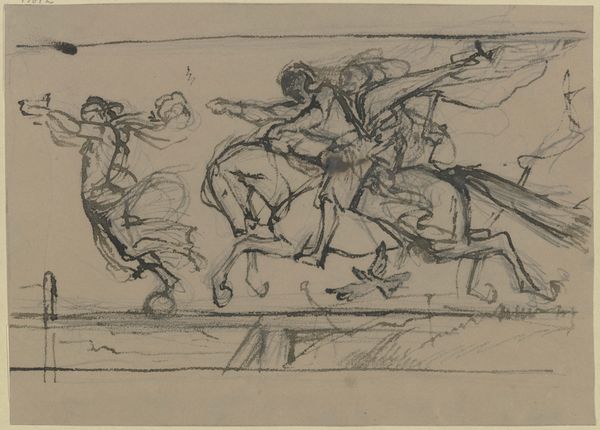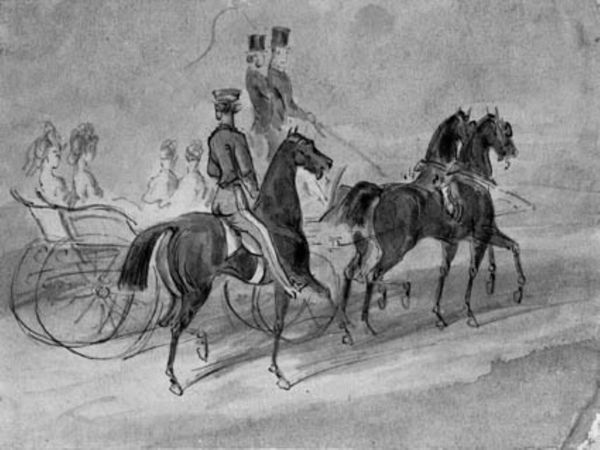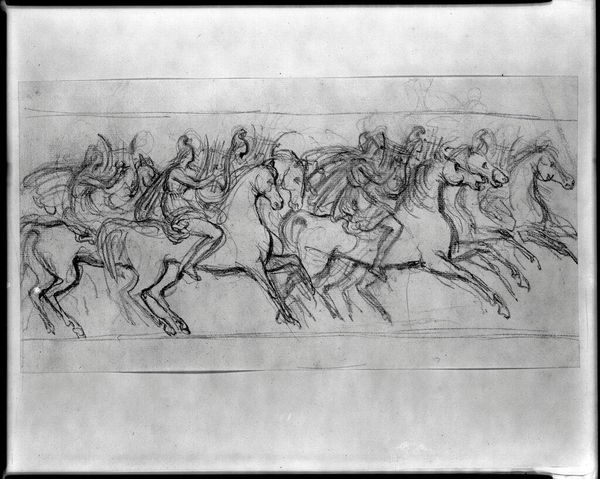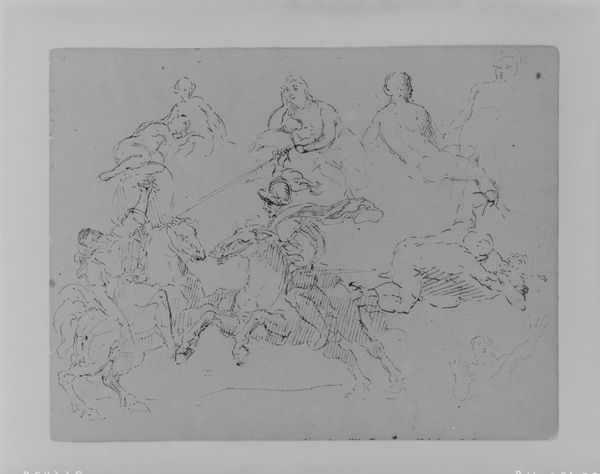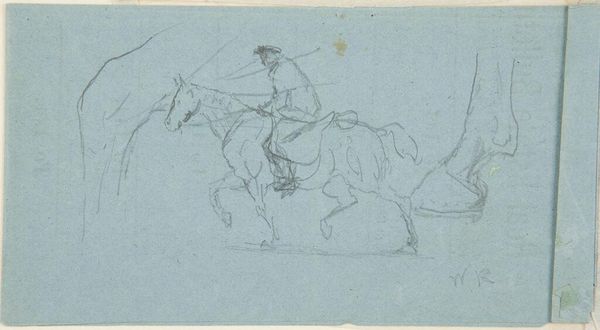
drawing, pencil
#
drawing
#
pencil sketch
#
landscape
#
pencil
#
horse
#
realism
Copyright: Public domain
Editor: Here we have "The Horse Fair (study)," a pencil drawing created in 1855 by Rosa Bonheur. It's such a dynamic sketch; all the movement is palpable despite the static medium. What jumps out at you when you look at it? Curator: I’m immediately struck by the energy, of course, but also the implied narrative. The horse, a symbol of power and freedom across many cultures, is presented here in a state of potential chaos, held in check by human figures. There is a push and pull – the wildness of nature against the constraints of civilization. Consider how often the horse appears in art to symbolize military might, royalty, or even spiritual journeys. How does this composition, showing labor and trade, challenge those pre-existing notions? Editor: That’s fascinating! I hadn’t considered how the image itself challenges our expectations. It's like Bonheur is using a well-known symbol to tell a different kind of story. Do you see other symbolic elements at play? Curator: Absolutely. The loose strokes and unfinished quality add to this sense of immediacy, evoking a raw, primal feeling. Light and shadow contribute: note how certain key figures and animals are highlighted while others remain obscured, adding layers of meaning. This play of light helps define which parts of the cultural memory she hopes to preserve or alter in her art. What sort of emotion is evoked in the sketch that isn't typically displayed, say, in other horse paintings that have less immediacy to them? Editor: The immediacy definitely lends a feeling of authenticity. I think, compared to more idealized depictions, this shows the gritty reality of the horse trade. This was truly insightful, giving me new appreciation for Bonheur’s subversion of symbolism. Curator: Indeed! The continuity and reinterpretation of cultural symbols give her work a timeless quality.
Comments
No comments
Be the first to comment and join the conversation on the ultimate creative platform.
